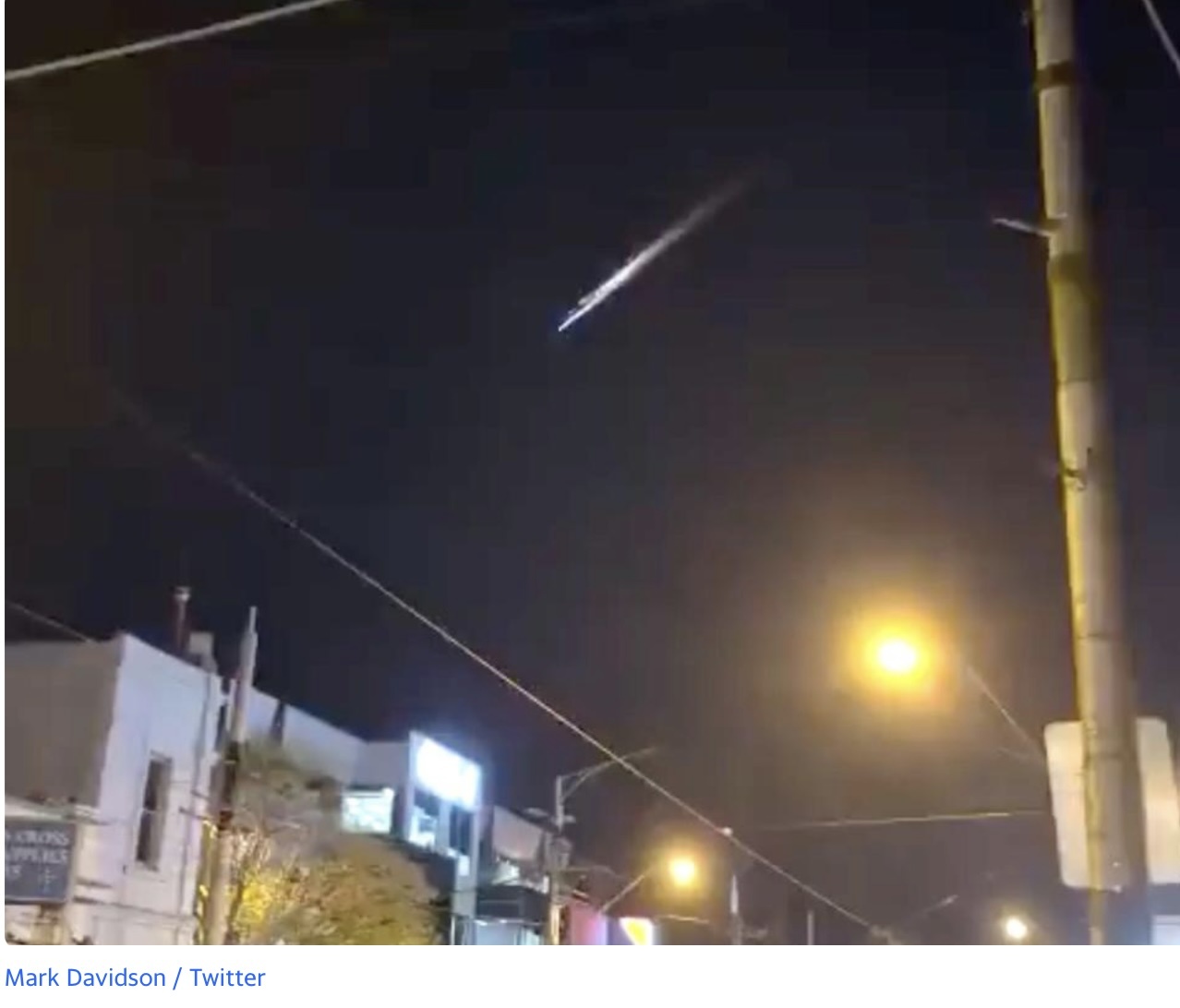24.05.2024
A spectacular fireball just streaked across Melbourne – but astronomers didn't see it coming

The first hours after a fireball sighting are like a detective mystery. Last night around midnight, people across Melbourne took to social media to report sightings of a bright light slowly streaking across the sky.
Video footage clearly shows the fireball break apart, with these fragments in turn burning up, meaning this object was big.
An unexpected piece of space junk
There have been reports across Victoria of a loud explosion. Known as sonic booms, such sounds imply the pieces survived long enough to enter the lower atmosphere – otherwise they wouldn’t be audible from the ground. In turn, this tells us at least a part of this fireball was dense.
Additionally, the glow of the fireball had clearly discernible colours, particularly orange, in some videos. This tells us the object isn’t a space rock, but is human-made, with a significant amount of plastics or metals burning up (familiar to anyone in high school chemistry class burning materials in the Bunsen burner).
So, it’s likely we just witnessed several tonnes of space junk – anything humans have put into orbit that isn’t under our control any longer – re-enter Earth’s atmosphere. However, nothing was predicted for reentry on the global space debris tracking site SatView.
According to an early analysis by US-based astronomer Jonathan McDowell, the fireball may have been the third stage of a Soyuz 2 rocket carrying the navigation satellite GLONASS-K2. This was launched by Roscosmos (the Russian space agency) on August 7 from the Plesetsk Cosmodrome about 800km north of Moscow.
The incredible brightness of the fireball is thanks to the tremendous speed at which objects re-enter Earth’s thin upper atmosphere, 25,000 kilometres per hour or more.
When you rub your hands together, they get warm from the friction between them. Do that a thousand times faster and you can start to imagine them glowing white hot from the heat. If the friction is between the metal of the space junk and Earth’s thin atmosphere at an altitude of 100km, we can get a very bright glow.
You can help astronomers with the details
To help us confirm what the fireball was and where it came from, we need witnesses to download the Fireballs in the Sky App and recreate the passage of that trail as best they can.
From all those sightings we can triangulate the trajectory and determine where any surviving pieces might have landed and try to collect them. Reports so far are conflicting and we need more data. It appears it came into the atmosphere from the north-west across Victoria to Tasmania in the south-east, but it’s too soon to tell what its exact path was.
Most space junk doesn’t make it to Earth. The incredible heat of 5,000 Kelvin or greater generated by the re-entry burns up almost all such pieces.
Some hardier engine blocks can make it to the ground, however, which is why alerts about space junk re-entering the atmosphere are sent out to aircraft in particular.
However, space junk travels so fast, even a very small mistake in the calculation of the re-entry will have it show up hundreds of kilometres away instead. For most purposes, such warnings are not as helpful as they could be.
To improve this system, we need better tracking stations on the ground and advances in the modelling of the interaction between space junk and the upper atmosphere to improve our forecasts.
Thankfully buildings, let alone people, are tiny targets relative to the vast unpopulated reaches of land and sea. While there have been reported hits, these are thankfully incredibly rare, making space junk hardly a danger for us on Earth.
As astronomers now rush to work out the details of this beautiful fireball, it also marks a spectacular opening for Australia’s National Science Week, with thousands of live talks explaining science as widely as possible, just like this event.
Quelle: The Conversation
